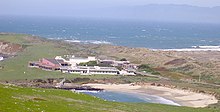 | Review waiting, please be patient.
This may take 2 months or more, since drafts are reviewed in no specific order. There are 1,793 pending submissions waiting for review.
Where to get help
How to improve a draft
You can also browse Wikipedia:Featured articles and Wikipedia:Good articles to find examples of Wikipedia's best writing on topics similar to your proposed article. Improving your odds of a speedy review To improve your odds of a faster review, tag your draft with relevant WikiProject tags using the button below. This will let reviewers know a new draft has been submitted in their area of interest. For instance, if you wrote about a female astronomer, you would want to add the Biography, Astronomy, and Women scientists tags. Editor resources
Reviewer tools
|
Submission declined on 15 November 2024 by AlphaBetaGamma (talk).
Where to get help
How to improve a draft
You can also browse Wikipedia:Featured articles and Wikipedia:Good articles to find examples of Wikipedia's best writing on topics similar to your proposed article. Improving your odds of a speedy review To improve your odds of a faster review, tag your draft with relevant WikiProject tags using the button below. This will let reviewers know a new draft has been submitted in their area of interest. For instance, if you wrote about a female astronomer, you would want to add the Biography, Astronomy, and Women scientists tags. Editor resources
This draft has been resubmitted and is currently awaiting re-review. |  |
 Comment: Pretty sure there's got to be some more thing to write for this organization. Announcement of 50th anniversary doesn't do much, so I'll be declining this. ABG (Talk/Report any mistakes here) 07:08, 15 November 2024 (UTC)
Comment: Pretty sure there's got to be some more thing to write for this organization. Announcement of 50th anniversary doesn't do much, so I'll be declining this. ABG (Talk/Report any mistakes here) 07:08, 15 November 2024 (UTC)

The Bodega Marine Lab is a remote field station/ research facility that has fallen under the purview of the University of California Davis since 1984 [1][2]. Initially built and established in 1966 under the supervision of UC Berkeley [3], the marine lab has since doubled in size.
Fields of study at BML include marine aquaculture, environmental toxicology, invertebrate biology, ocean acidification, and coastal oceanography[3], and the marine lab contains spaces for conferences, research, classrooms, and boating and diving programs[4].
The Bodega Marine Lab houses the stewards and scientists responsible for caring for the surrounding lands of the Bodega Marine Reserve, and lies within the National Oceanographic and Atmospheric Administration's Greater Farallones National Marine Sanctuary[3]. NOAA has three weather stations at the marine lab, and the California Department of Fish and Wildlife has two permanent members of staff stationed at BML. [2]
As of Fall 2023, the marine lab is open to the public every Friday from 2PM-4PM [5], when docents give guided tours of the marine lab and short lectures on its history.
Ongoing Research
editNative Oyster Restoration
editIn the early 2000s, the Aquatic Resources Group at the Bodega Marine Lab documented a population of Olympia oyster while conducting an environmental impact assessment at the San Francisco Airport. Since then, ARG has developed practices to both support wild populations of Olympia oyster, and rear them in aquaculture. Current efforts allow for culturing Olympia oysters in the hundreds of thousands, which allows for collaboration with other conservation oriented scientists and also aquaculture companies like Hog Island Oyster Company [6].
Urchin Ranching
editBML's Aquatic Resources Group has been developing techniques for "urchin ranching", a practice wherein purple urchins are collected from the wild and kept in aquaculture enclosures, a "ranch", to rear them with ample food resources with the goal of cultivating uni that can be sold in markets [6].
White Abalone Captive Breeding
editBML acts as the headquarters for the white abalone captive breeding program. The existing White Abalone Culture (WAC) Lab works in concert with CDFW's Shellfish Pathology & Health Lab to breed & rear white abalone in an aquaculture setting. Since 2012, this program has produced over 100,000 white abalone that have survived through their first year, and over four thousand captive-bred white abalone have been outplanted (returned to the Pacific ocean) [7]
References
edit- ^ Rosso, Laura Del (2008-06-22). "Marine lab a spectacular spot on Bodega Bay". SFGATE. Retrieved 2024-11-15.
- ^ a b Perez, Tanya (2015-09-12). "UCD's Bodega Lab is a 'marine powerhouse'". DavisEnterprise.com. Retrieved 2024-11-15.
- ^ a b c "50th Anniversary of Bodega Marine Laboratory | response.restoration.noaa.gov". response.restoration.noaa.gov. Retrieved 2024-11-14.
- ^ "Bodega Marine Reserve". 2015-07-08. Retrieved 2024-11-15.
- ^ "Bodega Marine Laboratory". Sonoma County Tourism. Retrieved 2024-11-15.
- ^ a b Lee, Jessica (2022-06-02). "All Eyes on ARG: Bodega Marine Lab's Best-Kept Secret | Coastal and Marine Sciences Institute". marinescience.ucdavis.edu. Retrieved 2024-11-15.
- ^ "The Big Day: White Abalone Captive Breeding at UC Davis Bodega Marine Lab". Oriana Poindexter. Retrieved 2024-11-15.
- in-depth (not just brief mentions about the subject or routine announcements)
- reliable
- secondary
- strictly independent of the subject
Make sure you add references that meet all four of these criteria before resubmitting. Learn about mistakes to avoid when addressing this issue. If no additional references exist, the subject is not suitable for Wikipedia.